Lilyfield House is a spatial assembly of internal and external rooms and volumes, opening to the light and rising to the district outlook. The rooms and platforms of the house pivot around the central atrium, connecting to garden terraces and opening a conceptual and personal dialogue through the levels. Photography by Robert Gray, John Gollings, studio203.
.



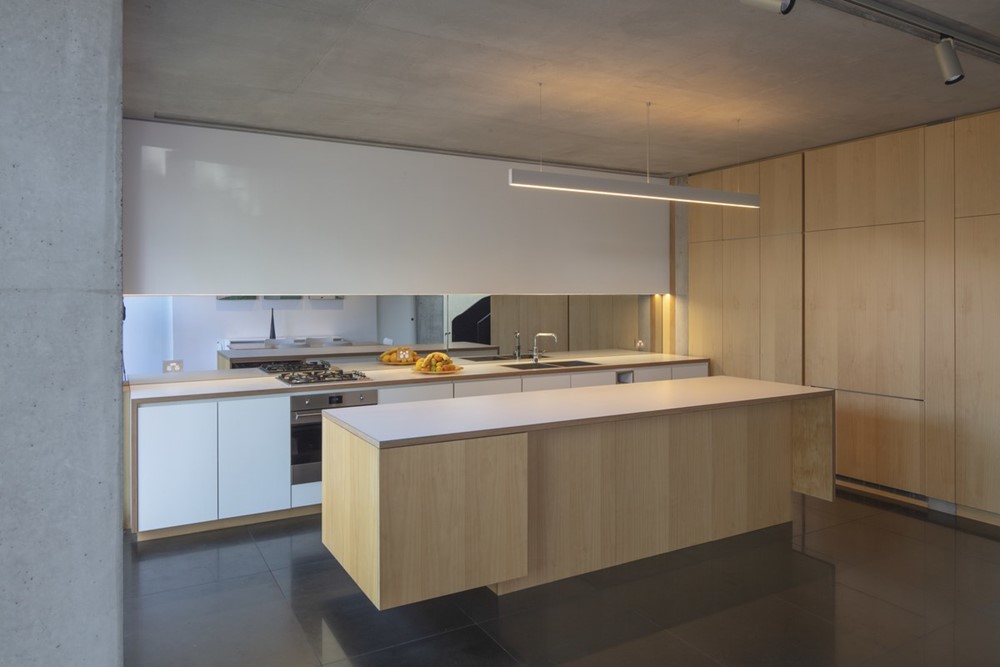

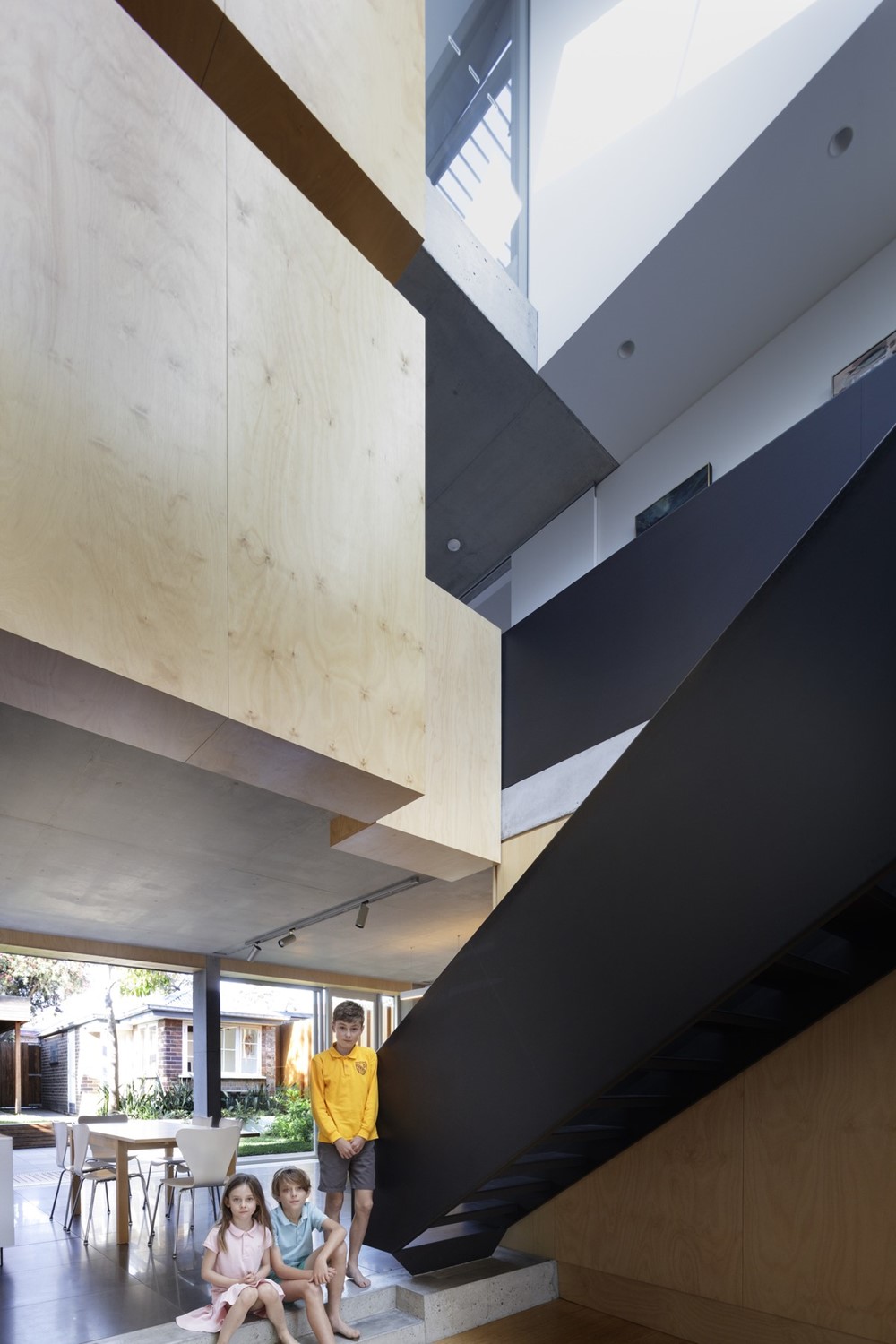


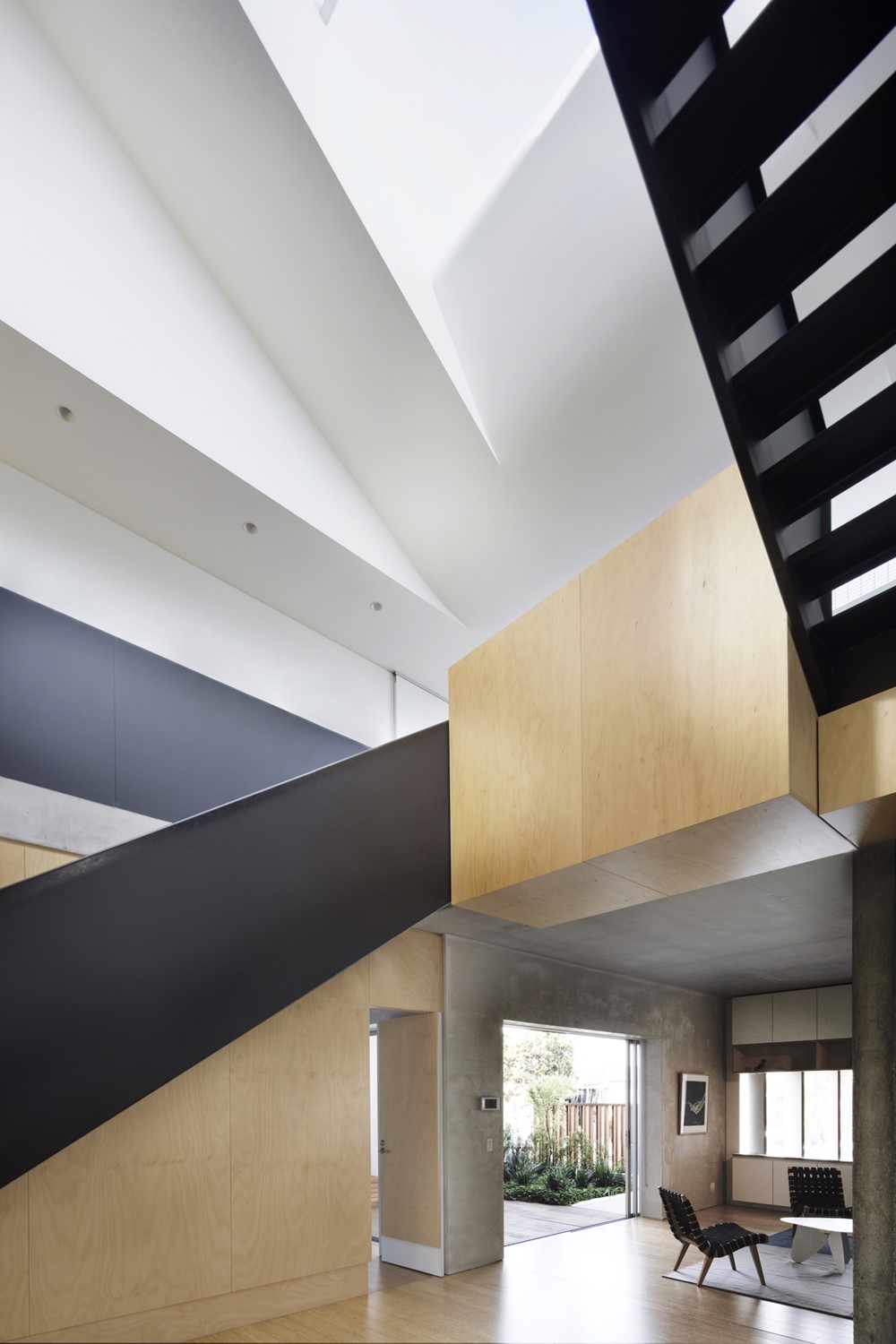


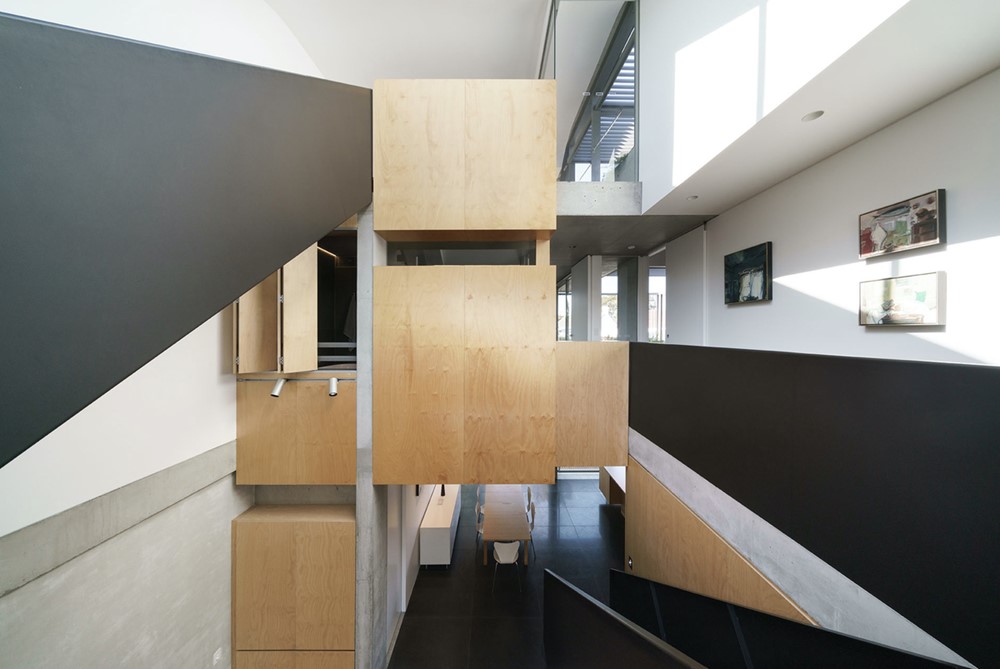


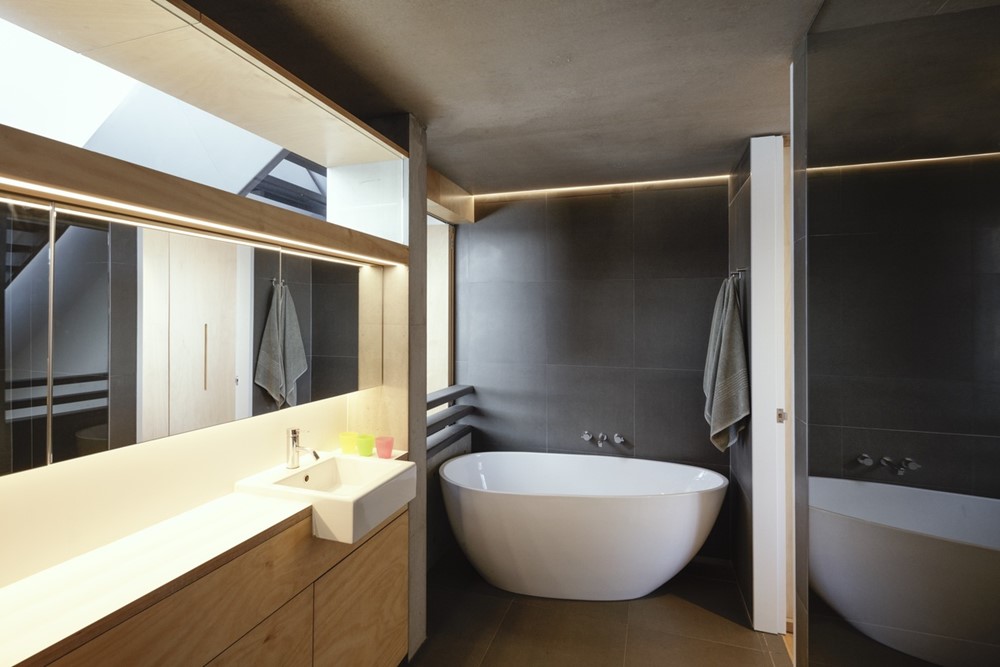











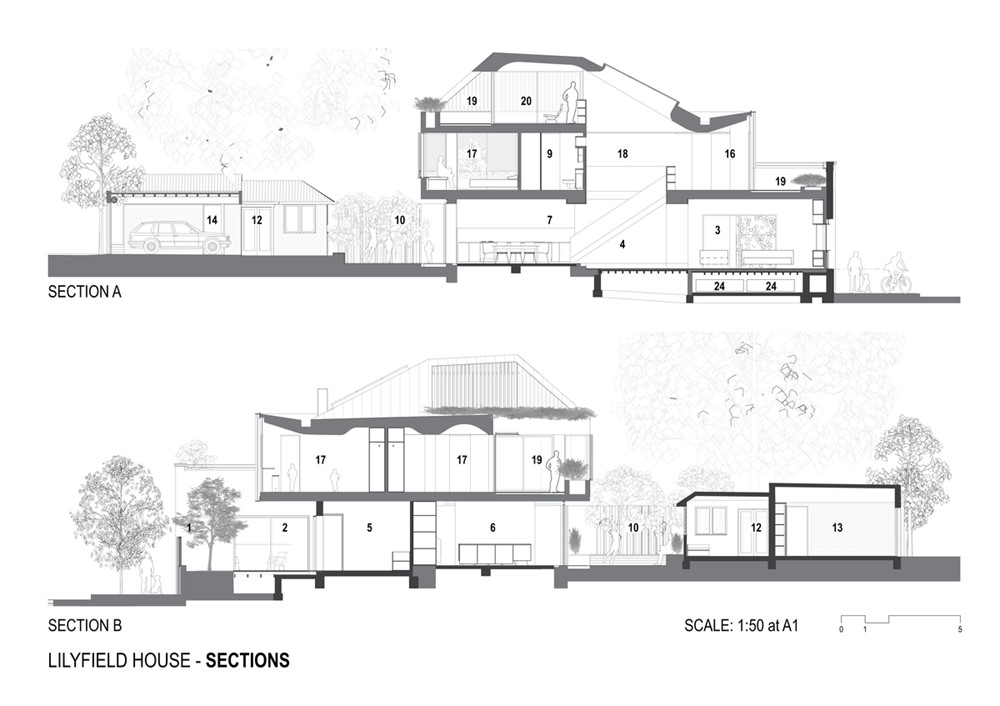 Lilyfield Houses rises behind a distinctive early shopfront, a local feature, renovated and set into scene, terminating the Norton Street Leichhardt vista.
Lilyfield Houses rises behind a distinctive early shopfront, a local feature, renovated and set into scene, terminating the Norton Street Leichhardt vista.
The idea of a ‘public’ path rising through the house, is interwoven with private spaces arranged around the central atrium and its black stairs, bridge and hearth. Beyond these spaces, garden terraces form an outer constellation such that every room is held between the central void and a garden experience.
The plan progressively reduces as the house rises culminating in a more intimate living space, enclosed tent-like by the curved inner planes of the roof and opening up to district views.
A richness of spatial and tectonic experience is given precedence over room count, technology for its sake or pursuit of newness.
Materials throughout are simple and reduced. White set render, sealed, identifies retained masonry from the original house. Off form concrete, bamboo flooring and hoop pine ply provide economical warmth and texture. Clear anodised framed glazing meets stringent acoustic and energy requirements.
The project engages the senses like the building’s hidden history: from the intricate tooled patterns of the white set masonry which is held together by the velvety materiality of the off-form concrete surfaces, to the cold smoothness of the stove finished black stairs and rustic fireplace, reminding of the charcoal traces of it’s predecessor. The reverberant sound of bare feet on the steel treads and firm landing on the stone of the kitchen floor reflect the robustness of the material palette of a bygone era.
Lilyfield House is an assembly of remnants, memories and opportunities. It seeks out special corners with vignettes of the outside world, offering privacy but ensuring a connectedness that is vital for the modern family.



